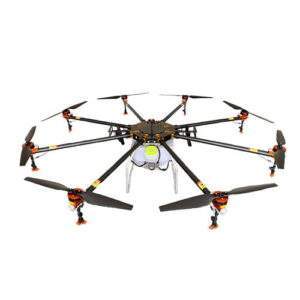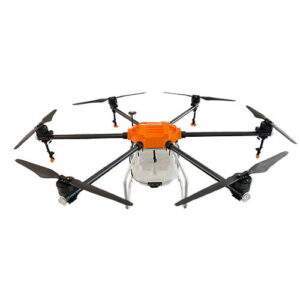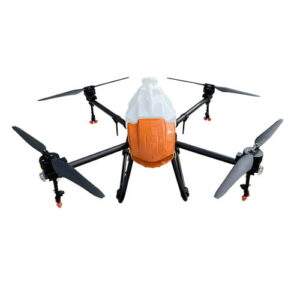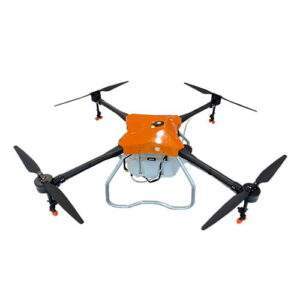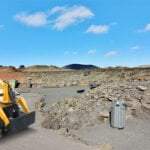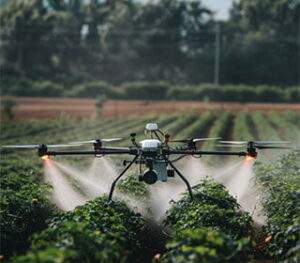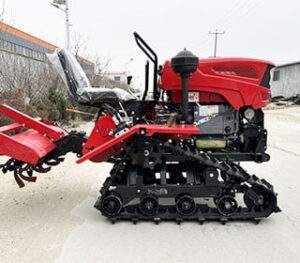Agriculture Drone Sprayer: A Game Changer in Modern Farming
Introduction
The advent of technology has revolutionized various industries, and agriculture is no exception. One of the most significant advancements in modern farming is the introduction of the agriculture drone sprayer. This innovative technology has transformed the way farmers manage their crops, offering numerous benefits that enhance efficiency, reduce costs, and promote sustainable farming practices. In this comprehensive guide, we will explore the many facets of the agriculture drone sprayer, providing you with valuable insights into its features, benefits, and practical applications.
The Rise of Agriculture Drone Sprayers
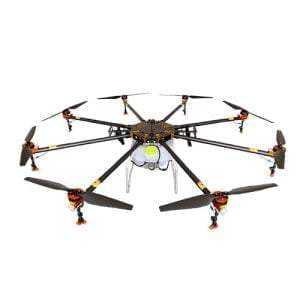
What is an Agriculture Drone Sprayer?
An agriculture drone sprayer is an unmanned aerial vehicle (UAV) equipped with a sprayer system designed to apply fertilizers, pesticides, and other agricultural inputs to crops. These drones are controlled remotely and can cover large areas of farmland with precision and efficiency, making them a valuable tool for modern farmers.
Historical Development
The concept of using drones in agriculture is relatively new, but it has quickly gained traction due to the increasing demand for precision farming. Early models were limited in capability, but advancements in technology have led to the development of sophisticated agriculture drone sprayers that offer advanced features and higher efficiency.
Benefits of Using Agriculture Drone Sprayers
The use of agriculture drone sprayers offers several key benefits:
- Precision: Drones can apply inputs with high accuracy, reducing waste and ensuring even distribution.
- Efficiency: Drones can cover large areas quickly, saving time and labor costs.
- Cost-Effectiveness: Reduced input usage and labor costs translate to significant savings for farmers.
- Environmental Sustainability: Precise application reduces the risk of over-spraying, minimizing environmental impact.
- Accessibility: Drones can easily access hard-to-reach areas, ensuring comprehensive coverage.
Key Features of Agriculture Drone Sprayers
Advanced GPS and Mapping Capabilities
Modern agriculture drone sprayers are equipped with advanced GPS and mapping systems that enable precise navigation and application. These systems allow farmers to create detailed maps of their fields, identify specific areas that need treatment, and program the drone to follow a precise path.
High-Capacity Tanks and Efficient Spraying Systems
Agriculture drone sprayers come with high-capacity tanks that can hold significant amounts of liquid, reducing the need for frequent refills. The spraying systems are designed to deliver inputs uniformly and efficiently, ensuring optimal coverage and effectiveness.
Real-Time Monitoring and Data Collection
Many agriculture drone sprayers are equipped with sensors and cameras that provide real-time monitoring and data collection. This allows farmers to assess the health of their crops, identify issues early, and make informed decisions based on accurate data.
User-Friendly Interfaces and Automated Features
User-friendly interfaces and automated features make agriculture drone sprayers accessible even to those with limited technical knowledge. Automated flight paths, easy-to-use controls, and safety features ensure that drones can be operated safely and effectively.
Practical Applications of Agriculture Drone Sprayers
Crop Spraying
The primary use of agriculture drone sprayers is for the application of fertilizers, pesticides, and herbicides. Drones can be programmed to apply these inputs precisely where needed, reducing waste and improving crop health.
Disease and Pest Detection
Equipped with advanced sensors, agriculture drone sprayers can detect signs of disease and pest infestations early. This allows farmers to take prompt action, preventing the spread of diseases and minimizing crop damage.
Soil and Field Analysis
Agriculture drone sprayers can also be used for soil and field analysis. By collecting data on soil moisture, nutrient levels, and other factors, drones help farmers make informed decisions about irrigation, fertilization, and other farming practices.
Planting and Seeding
Some advanced agriculture drone sprayers are capable of planting and seeding. This can significantly reduce labor costs and improve planting efficiency, especially in large or hard-to-reach areas.
Irrigation Management
Drones can be used to monitor irrigation systems and ensure that water is distributed evenly across the fields. This helps in optimizing water usage and maintaining soil health.
Evaluating Agriculture Drone Sprayer Models
Top Agriculture Drone Sprayer Models
When selecting an agriculture drone sprayer, it’s important to consider reputable brands known for their quality and reliability. Here are some of the top models available in the market:
| Model | Brand | Key Features |
|---|---|---|
| DJI Agras T30 | DJI | High payload capacity, advanced spraying system |
| Varyon M100 | Varyon | Reliable performance, extensive range |
| Parrot Bluegrass | Parrot | Versatile use, user-friendly interface |
| XAG P30 | XAG | Precision spraying, robust design |
| Hylio AG-122 | Hylio | Customizable, efficient data collection |
Comparing Models
Compare different models based on your specific needs. Consider factors such as tank capacity, battery life, range, and additional features like real-time monitoring and automated flight paths. Reading customer reviews and seeking recommendations from other farmers can also provide valuable insights.
Budgeting for Your Agriculture Drone Sprayer
Determining Your Budget
Set a realistic budget for your agriculture drone sprayer purchase. Consider both the initial cost and long-term expenses such as maintenance, software updates, and potential repairs. While it may be tempting to opt for the cheapest option, investing in a quality drone can save you money in the long run through improved performance and durability.
Financing Options
Explore financing options available for purchasing an agriculture drone sprayer. Many manufacturers and dealers offer financing plans that can make it easier to afford a high-quality drone. Additionally, consider government grants or subsidies that may be available for agricultural equipment.
Installation and Maintenance of Your Agriculture Drone Sprayer
Installation Process
The installation process for an agriculture drone sprayer involves several steps, including assembly, calibration, and software setup. Ensure that the installation is carried out by qualified professionals who adhere to industry standards and regulations. Proper installation is crucial to ensure the drone’s stability and functionality.
Regular Maintenance Checks
Regular maintenance is essential to keep your agriculture drone sprayer in optimal condition. Follow the manufacturer’s maintenance schedule, which typically includes inspections, cleaning, and testing of various components. Routine maintenance can prevent costly breakdowns and extend the drone’s lifespan.
Common Issues and Troubleshooting
Familiarize yourself with common issues that may arise with your agriculture drone sprayer and how to troubleshoot them. This knowledge can save you time and money by addressing minor problems before they escalate. Keep a maintenance log to track any issues and repairs.
Enhancing Farm Operations with Agriculture Drone Sprayers

Workflow Optimization
A well-designed agriculture drone sprayer system can significantly optimize workflows in farming environments. By providing easy access to essential utilities, farmers can perform tasks more efficiently, reducing labor costs and improving overall productivity.
Integration with Other Agricultural Equipment
Agriculture drone sprayers can be integrated with other agricultural equipment to create a seamless farming environment. For example, integrating the drone with irrigation systems, sensors, and data analytics tools can streamline farm management and enhance efficiency.
Staff Training and Utilization
Ensure that your farm staff is adequately trained in the use of the agriculture drone sprayer system. Proper training can maximize the drone’s utility and ensure that staff can quickly and efficiently access the necessary utilities during farming operations.
Conclusion
Choosing the right agriculture drone sprayer for your farm is a significant investment that requires careful consideration of various factors. By understanding your farm’s needs, evaluating key features, comparing brands and models, and budgeting wisely, you can select a drone that enhances your farming operations. Regular maintenance and staff training will ensure that your drone remains reliable and efficient for years to come.
FAQ
What is the ideal tank capacity for an agriculture drone?
The ideal tank capacity depends on the size of your farm and the tasks you need the drone to perform. For small to medium-sized farms, a tank capacity of 10-20 liters is generally sufficient, while larger farms may require drones with tank capacities of 30 liters or more.
How often should I perform maintenance on my agriculture drone?
Regular maintenance should be performed according to the manufacturer’s recommendations, typically every 50-100 hours of operation. This includes inspections, cleaning, and testing of various components to ensure optimal performance and safety.
Are there any government subsidies available for purchasing agriculture drone?
Yes, many governments offer subsidies or grants for purchasing agricultural equipment, including agriculture drone. Check with your local agricultural department or government agencies for available programs and eligibility criteria.
Can agriculture drone be customized for specific farming environments?
Yes, agriculture drone can be customized to meet the specific needs of different farming environments. Manufacturers offer a range of configurations, allowing you to choose the tank capacity, spraying system, and additional features that best suit your farm’s requirements.
What should I consider when choosing between different agriculture drone sprayer models?
When choosing between different agriculture drone sprayer models, consider factors such as tank capacity, battery life, range, and additional features like real-time monitoring and automated flight paths. Compare models from reputable brands and seek recommendations from other farmers to make an informed decision.

